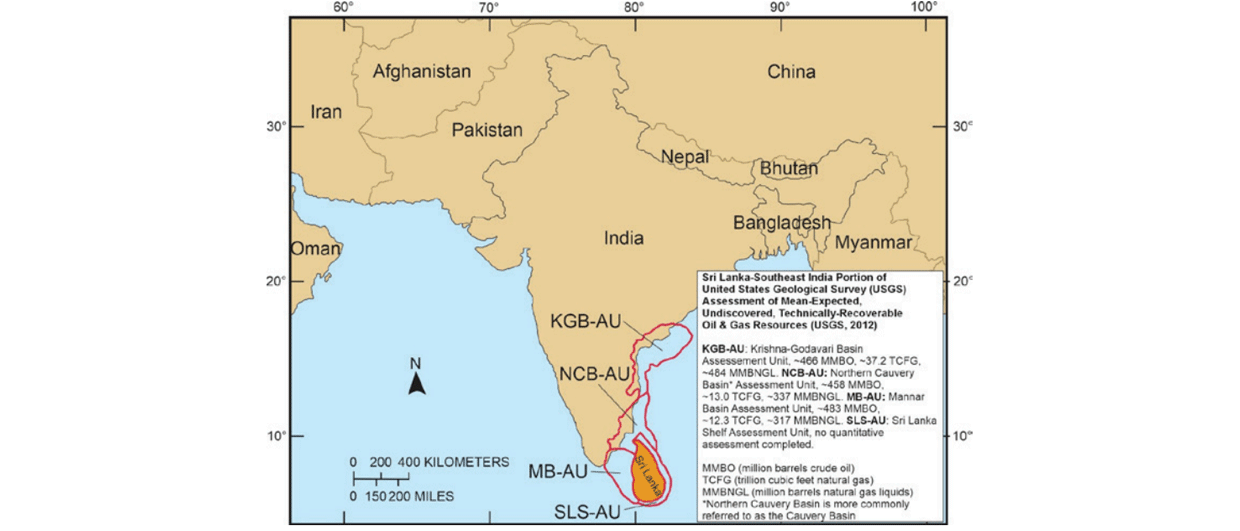With 14 oil discoveries adding up to an estimated six billion barrels of recoverable oil over the last two years in just one block (Stabroek), offshore Guyana is proving to have quite a promising outlook for hydrocarbon production.
Exploration can rarely said to be ‘hot’ when expensive wildcats routinely come up dry. But after more than 25 dry wells in ‘the Guyanas’ over the last two decades, 14 oil discoveries adding up to an estimated six billion barrels of recoverable oil over the last two years in just one block (Stabroek) offshore Guyana is proving blistering. The legacy of bleak dry holes in ever deeper water and well costs that compete with Britain’s Premier League football for eye-watering numbers are now being offset by world-class success in a classic deepwater exploration campaign that both galvanises and challenges explorationists in equal measure.
Future wells to watch in the Guyanas.
The Stabroek cluster, challenging the scale of Brazil’s pre-salt and the reliability of Angola’s Lower Congo Basin, may light up all of Guyana and Suriname, and perhaps motivate a return of oil companies to French Guiana. Or, does this super-cluster preface a Jubilee-style race to a string of dusters in adjacent basins? Suriname especially has so far proven that being next door to Stabroek does not guarantee an invite to the party. Big names such as Murphy, Noble, Chevron, Apache, Tullow and Kosmos have all fallen short in major drilling campaigns offshore Suriname, while the appraisal of Zaeydeus in French Guiana is a painful memory for Tullow, Total and Shell.
Drilling Will Reveal True Hydrocarbon Potential in Guyana
And now, while the Exxon/Hess/CNOOC group notch up sizable reserves additions in Stabroek, the savvy Tullow/Eco/Total group in the immediately updip Orinduik Block are soaking up the glory, batting two for two with oil discoveries at Jethro and Joe. Their Tertiary play is said to ‘light up’ on 3D in this basin, but the same effect is rarely repeated with any consistency in the Cretaceous elsewhere, especially in the conjugate basins of the South Atlantic. Industry observers have pointed out the Tertiary play in the Orinduik Block was already de-risked by Hammerhead, and their Cretaceous play, yet to be tested, whilst it has far more to offer, has far higher risks.
Looking ahead, the drill bit will help decide what’s hot and what’s not. In Suriname, Apache will spud a well (or two) in Block 58 this month; Kosmos, with Chevron and Hess, have Aurora and Walker planned in Block 42, while Tullow, with Ratio and Pluspetrol, are targeting Goliathberg in Block 47 and Tullow may test Block 54. In addition, back in Guyana, CGX have at least one well planned in the Corentyne Block and Repsol, with Tullow and Total, will drill the Kanuku Block Carapa 1. Tullow is forging ahead with the drill bit, announcing three wells in 2020 on the Orinduik Block – and of course ExxonMobil is flat out on Stabroek, with three drillships operating, as the Liza FPSO gets into position as the first of five such vessels planned on the Stabroek Block, which is targeting 750 Mbopd by 2025. So, numerous exploration teams are positioning to chase the Tertiary and challenge the Cretaceous nearby. Stay tuned!
Further Reading on Oil and Gas Activity in Guyana
Exploration Update: Guyana
Brought to you by GEO ExPro and Drillinginfo
On 30 August 2018, ExxonMobil announced its ninth hydrocarbon discovery on the Stabroek Block, offshore Guyana.
This article appeared in Vol. 15, No. 5 – 2018
Exploration Update: Guyana
Brought to you by GEO ExPro and Drillinginfo
ExxonMobil confirms discovery of 20m high-quality, oil-bearing sandstone in the Guyana-Suriname Basin, offshore Guyana.
This article appeared in Vol. 15, No. 2 – 2018
Exploration Update : Guyana
Brought to you by GEO ExPro and Drillinginfo
ExxonMobil announce fifth discovery offshore Guyana.
This article appeared in Vol. 14, No. 6 – 2017
Suriname – New Technology Unlocks Hydrocarbon Potential
Clyde Griffith, Ralph Kariodimedjo and Mohamed Chandoe, (Staatsolie) Christian Richards, Paul Versnel and Ben Spurgeon, (AustinBridgeporth)
An improved knowledge of fault systems is important in understanding Suriname’s onshore oil fields – and the application of FTG data can be a vital tool in unlocking this knowledge.
This article appeared in Vol. 13, No. 4 – 2016
Petroleum: A New Economic Boost for Suriname
Vinita Bihariesingh-Raghoenath and Clyde Griffith, Staatsolie
Good proven source rocks and reservoirs, and analogs with the conjugate margin across the Atlantic – could the waters offshore Suriname be harboring great riches?
This article appeared in Vol. 10, No. 4 – 2016
Advertisement





